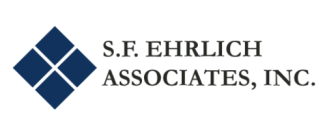
Potential Cost Savings on Medicare and Prescription Meds?
December 31, 2018
If your health insurance is through Medicare, you might be paying too much for prescription medications.
Consumer Reports1 conducted a study in six cities that involved three Part D prescription drug plans. In each of the six cities, they “looked at two pharmacies and checked prices for generic versions of five common drugs.” In Denver, “Someone filling prescriptions for the five drugs we looked at, plus paying a $16 monthly premium, could pay as little as $524 for a full year. But another person – at the same store with the same prescriptions but a different plan – would pay $1,686.”
Consumer Reports, as well as many other experts, recommends that Medicare participants start with the prescription drug tool found at Medicare.gov. In order to generate the best information, it’s important to enter every prescription drug taken every 30 or 90 days. (Even omitting one drug can result in selecting the wrong plan.) It’s even more critical to conduct this exercise every year.
Notes Mary Jeanne Cullen2, a Medicare consultant to whom we’re previously referred clients: “A drug that was a Tier 4 non-preferred drug could move to a Tier 3 preferred brand bringing the cost down for the new plan year, or vice versa. Depending on the carrier, a Tier 1 preferred generic drug with one company could be a Tier 2 generic drug with another company. Costs vary between plans, sometimes widely, and it is important to compare them.”
Even entering the name of pharmacies can lead to significant cost differences, as “Part D plans typically negotiate special arrangements with certain pharmacies – called ‘preferred pharmacies’ – that let them offer deals in those stores.” Adds Cullen: “One year a particular pharmacy may be offering the best prices overall and the next year a different pharmacy comes out ahead. It rarely stays the same because they are dependent on the prices that are charged by the pharmacy benefit managers.”
Equally important is to look at more than just monthly premiums and deductibles. It’s essential to look at total drug costs that combine all applicable expenses.
Finally, and perhaps most surprisingly, Consumer Reports points out that paying cash may sometimes be cheaper than using your drug plan. When they looked at costs in Dallas, for example, “Depending upon the plan and pharmacy, some people there will pay $47 per month for Celecoxib after they meet their $100 deductible. But they can buy it for $16 at a local Tom Thumb pharmacy using a coupon from GoodRx. In Denver, someone could pay $38.50 for generic Cymbalta (duloxetine) at Walgreens with insurance but only $13.50 with a GoodRx coupon at a Safeway pharmacy.”
It may pay to spend time doing some homework because the savings over the course of a year can be considerable.

